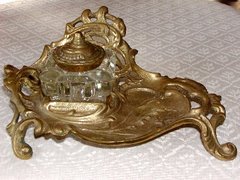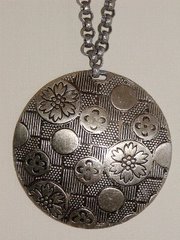If you’re going to spend your hard-earned money adding pieces to your collection, you want to be sure the pieces you choose are in the best condition possible. The better the condition, the higher the value. This is true across the board for both antiques and collectibles – condition is everything. To get the best for your money, you need to become a Repair Detective.
China, Porcelain, Pottery - You can find most unrepaired damage on china and pottery easily through touch and close visual inspection. But good repairs may be more difficult to spot. Look for variations in the color of the glaze, paint or pattern, which can indicate that someone tried to conceal a repair. Yellowing of old glue is another dead giveaway. You can also feel a difference between the original surface and the repaired area, even if it’s been painted or glazed over.
A black light is another method used to detect repairs. Holding the light up to the piece in a dark room should reveal the presence of adhesives through a different kind of “glow”; this is especially true with art repairs – Steve Wynn’s expensive mishap with his $139 million Picasso (now devalued by $54 million after he accidentally poked a hole in it with his elbow) has been professionally repaired and is said to only be detectable with a black light.
Some people also use the scratch test, where a pin is used to gently scratch the surface of the suspected repair. The original glaze will not have any “give”, but the repair will. Of course, this must be done with the permission of the dealer, as it will damage the repair.
Glass, Crystal – It can be more difficult to spot a small chip or crack on a heavily cut piece of glass or crystal. Carefully running your fingers over the surface will help you find inconsistencies in the pattern, which could indicate a chip. A good test for cracks is to carefully flick the edge of the piece with your fingernail – cracked pieces will sound more like a “thunk” than a “ring”.
On expensive pieces of any kind, it’s best to get a detailed receipt from the dealer, which includes not only the age of the piece, but also its condition and a money-back guarantee if the piece turns out not to be as it was represented. This way, if you get home and your black light test picks up an extremely fine hairline crack or the piece is appraised as a reproduction, you can return it (as long as it wasn’t sold “as is”). Professionals can tell the difference between old and new damage.
Always check online sellers' item descriptions for mention of damage. If none is mentioned, you can email a direct question to confirm the item's condition; this way you have it in writing. Honest sellers have no qualms about sharing this information.
You'll find complete descriptions of item conditions at Collector's Cottage; click on China & Porcelain and/or Glass links for examples.
Subscribe to:
Post Comments (Atom)




No comments:
Post a Comment